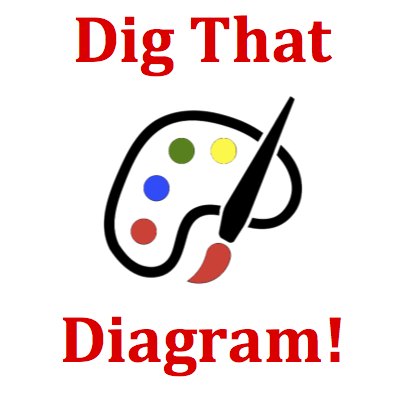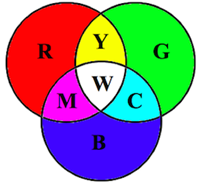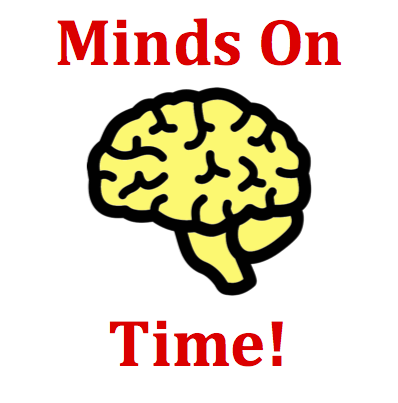Hold down the T key for 3 seconds to activate the audio accessibility mode, at which point you can click the K key to pause and resume audio. Useful for the Check Your Understanding and See Answers.
Mission LC5 Color Subtraction - Question Group 9 Help

Three colored spotlights - red, green and blue - with equal intensities may be turned ON and OFF in order to illuminate a shirt with different colors of light. A shirt which appears magenta under white light is placed under the spotlights and then appears as red. One can say conclusively that the ____ spotlight(s) is/are turned OFF.
(Note: the actual colors listed are generated at random and may vary from the above.)

 Many students of physics have seen a diagram similar to the one shown at the right. The diagram depicts three circles colored with the primary colors of light - red, green and blue. The primary colored circles overlap to produce other colors of light - known as the secondary colors of light: cyan, magenta and yellow. Complementary pairs of light colors are those colors that are exactly opposite each other on the diagram: red and cyan, magenta and green, and blue and yellow.
Many students of physics have seen a diagram similar to the one shown at the right. The diagram depicts three circles colored with the primary colors of light - red, green and blue. The primary colored circles overlap to produce other colors of light - known as the secondary colors of light: cyan, magenta and yellow. Complementary pairs of light colors are those colors that are exactly opposite each other on the diagram: red and cyan, magenta and green, and blue and yellow.
The color a shirt appears is related to the wavelengths (colors) of light that it reflects. And of course to reflect a color of light, that light color must be shining on the shirt. From the appearance of the shirt in the presence of white light, we can infer what the shirt can do to each of the three primary colors of light. If a shirt appears magenta under white light, then the shirt is capable of reflecting magenta light. Magenta light is a combination of red and blue light (see the Dig that Diagram section). So the shirt is capable of reflecting red and blue light (whenever red and blue light shine upon it) and absorbing green light (whenever green light shines upon it).
Now suppose the same shirt is placed underneath the red, green and blue spotlights - any one of which could be on or off. The shirt is observed to be of red appearance. Red light is being reflected by the shirt so the red spotlight must be turned on. What about the green and blue spotlights? The blue spotlight MUST be turned off. After all, if blue light was shining on our shirt, then it would be reflecting it and the appearance would have some blue to it. As for the green spotlight, it is impossible to conclude as to whether it is on or off. Our eyes can only detect the light which gets reflected. And the green light would not be reflected by this shirt, whether it was shining on it or not.

